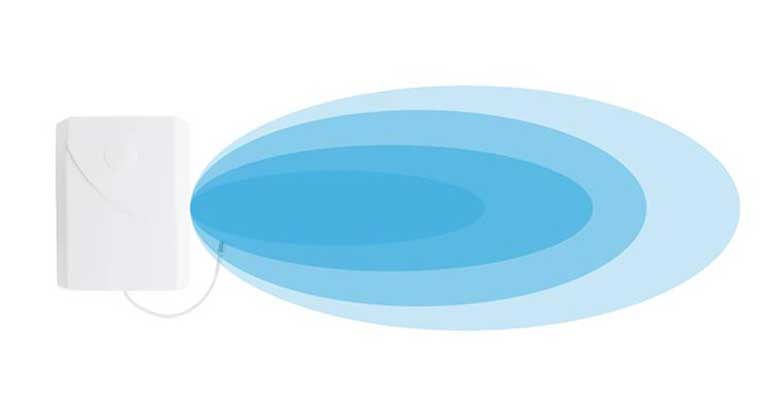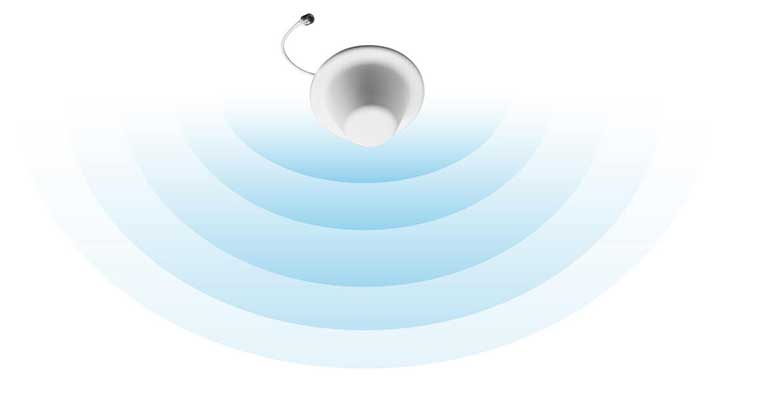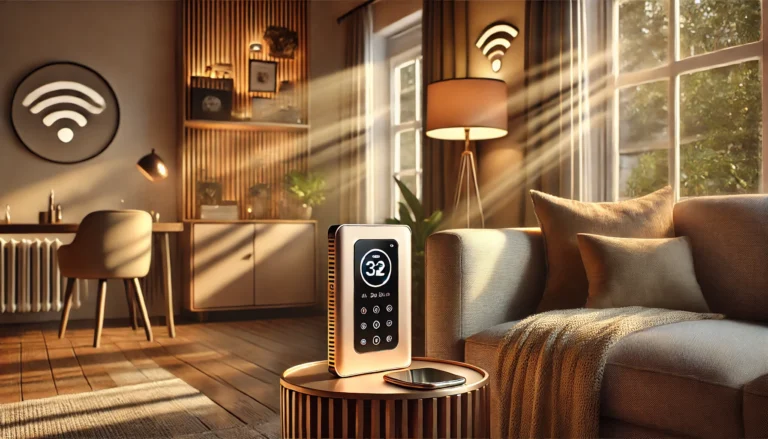Being connected is more than simply a convenience in the current digital era; it is a need. A robust and dependable cellular connection is essential for working from home, streaming your favourite shows, or just keeping in contact with loved ones. However, a lot of homeowners struggle with spotty or weak mobile signals because of things like construction materials, topographical barriers, and distance from cell towers. These problems can be effectively resolved using indoor cellular antennas, which increase signal strength and improve overall mobile connectivity. In order to assist you in making an informed choice, this thorough guide examines the features, kinds, and advantages of indoor cellular antennas as well as offers a thorough comparison.
What an Indoor Cellular Antenna Does, and How to Use Them
In order to improve cellular connectivity within buildings, indoor cellular antennas are essential. These antennas ensure that the boosted signal is efficiently dispersed throughout your house or place of business by rebroadcasting the cellular signals that outdoor antennas have picked up. The two main types of indoor antennas are panel and dome, just like their outdoor counterparts.
Panel Antennas: Versatility and Power
Panel antennas are a staple in many cellular signal booster kits, such as those offered by weBoost and Wilson Electronics. These antennas are typically wall-mounted and emit signals in a directional cone, ranging from 45 to 70 degrees. This focused approach allows for a stronger signal in the targeted area, making them highly effective in environments with specific coverage needs.
Key Features:
- Directional Focus: Sends signals in a narrow cone, enhancing signal strength where it’s needed most.
- Coverage Area: On average, panel antennas provide coverage up to 75 feet, though this can vary based on external signal strength.
- Interference Resistance: Ideal for environments with building materials like metal, concrete, and energy-efficient barriers that can disrupt signal penetration.
Benefits:
- Targeted Coverage: Perfect for prioritizing specific areas such as living rooms, home offices, or conference rooms.
- Flexible Installation: Can be installed on walls or high ceilings to maximize signal distribution.
- Higher Gain: Typically offers higher gain compared to dome antennas, making them suitable for areas with significant signal interference.

Dome Antennas: Convenience and Coverage
Dome antennas are designed to provide broad and uniform signal coverage. Mounted on ceilings, these antennas broadcast the amplified signal 360 degrees horizontally, effectively covering large and open spaces within a home or commercial building.
Key Features:
- Omni-Directional Coverage: Ensures equal signal distribution in every direction, akin to broadcasting within a half-sphere.
- Coverage Area: Typically covers up to 50 feet, though areas with poor cellular service may experience reduced coverage.
- Discreet Installation: Often installed in crawl spaces or attics, making them ideal for maintaining a clean and unobtrusive interior aesthetic.
Benefits:
- Wide Coverage: Delivers consistent signals across large, open areas, making them ideal for single-story homes or commercial spaces with minimal internal obstructions.
- Easy Integration: Blends seamlessly with the ceiling, maintaining the aesthetic appeal of the interior space.
- Effective in Low-Interference Environments: Performs exceptionally well in settings with low internal interference and minimal signal disruption from building materials.

Comparison Table: Panel vs. Dome vs. Low Profile Indoor Antennas
| Feature | Panel Antennas | Dome Antennas | Low Profile Dome Antennas |
| Shape | Flat, rectangular | Rounded, dome-shaped | Similar to dome but more compact |
| Signal Direction | Directional (focused) | Omni-directional (360°) | Omni-directional with slightly higher gain |
| Gain (dBi) | Up to +10.6 dBi | Up to +5.1 dBi | Up to +7 dBi |
| Coverage Area | Up to 75 feet (varies with signal) | Up to 50 feet (varies with signal) | Between panel and dome, around 60 feet |
| Ideal Use Case | Specific areas needing strong signal | Broad coverage in open spaces | Balance between broad coverage and discreet design |
| Installation | Wall or ceiling-mounted, requires precision | Ceiling-mounted, often requires access to crawl space or attic | Ceiling or wall-mounted, easier than traditional dome antennas |
| Aesthetic Impact | Visible on walls or ceilings | Discreet when installed in ceilings | More compact and less obtrusive than standard dome antennas |
| Interference Handling | High, suitable for areas with thick walls and barriers | Moderate, best in low-interference environments | Better than standard dome in handling interference |
Panel vs. Dome: Which Should I Get?
Choosing between a panel and dome antenna depends on several factors related to your specific environment and connectivity needs:
Opt for a Panel Antenna if:
- You Have High Internal Interference: Thick walls, metal structures, and glass can disrupt signals. Panel antennas can focus the signal in a specific area, overcoming these barriers more effectively.
- You Need Targeted Coverage: If there’s a particular room or section of your home that requires stronger connectivity, such as a home office or a media room, panel antennas are ideal.
- You Prefer Higher Gain: Panel antennas generally offer higher gain, making them suitable for areas with weaker external signals.
Opt for a Dome Antenna if:
- You Have Low Internal Interference: In environments with fewer obstacles and minimal signal disruption, dome antennas can provide broad and consistent coverage.
- You Need Uniform Coverage: If you want to distribute the signal evenly throughout an open space or a single-story home, dome antennas are the better choice.
- You Prefer a Discreet Setup: Dome antennas can be installed in crawl spaces or attics, maintaining the aesthetic integrity of your interior spaces.
Combination Approach:
In multi-level homes or larger commercial buildings, a combination of both panel and dome antennas may be necessary to achieve comprehensive coverage. This approach allows you to target specific high-priority areas while ensuring broad coverage in less obstructed spaces.
Key Features to Consider When Choosing an Indoor Antenna
Selecting the right indoor antenna involves evaluating several factors to ensure optimal performance and compatibility with your specific needs:
1. Frequency Bands Supported
Ensure the antenna supports the frequency bands used by your cellular carrier. Common bands include 700 MHz, 800 MHz, 1700/2100 MHz, and 2600 MHz. Multi-band antennas offer greater flexibility and compatibility with various networks.
2. Gain (dBi)
Gain measures the antenna’s ability to amplify signals. Higher gain antennas provide stronger signal amplification but may require more precise placement. Balance your need for signal strength with the feasibility of installation.
3. Type of Antenna
Decide between panel, dome, multi-room, ceiling-mounted, or wall-mounted antennas based on your location and the distribution of cell towers. Dome antennas are ideal for general coverage, while directional antennas excel in targeted signal enhancement.
4. Compatibility with Signal Boosters
Verify that the indoor antenna is compatible with your signal booster or amplifier system. Compatibility ensures seamless integration and optimal performance of your entire cellular enhancement setup.
5. Coverage Area
Consider the size of the area you need to cover. Larger homes or offices may require multi-room or ceiling-mounted antennas, while smaller spaces can benefit from dome or wall-mounted models.
6. Ease of Installation
Some antennas are more user-friendly and easier to install than others. Look for models with straightforward setup processes, especially if you plan to install them yourself without professional assistance.
7. Aesthetic Appeal
Indoor antennas come in various designs and sizes. Choose an antenna that blends well with your interior décor to maintain the aesthetic appeal of your space.
Top Indoor Cellular Antenna Recommendations
Based on performance, reliability, and user reviews, here are some of the top indoor cellular antennas available in the market:
1. Product Name
Overview:
Key Features:
Pros:
Cons:
Installation Tips for Indoor Cellular Antennas
Proper installation is crucial to maximize the performance of your indoor cellular antenna. Follow these best practices to ensure optimal signal reception and amplification:
1. Choose the Right Location for the Indoor Antenna
Select a central location within your coverage area to ensure even distribution of the amplified signal. Avoid placing the antenna near large metal objects or electronic devices that can interfere with signal quality.
2. Connect to a High-Quality Signal Booster
Ensure that your indoor antenna is paired with a high-quality signal booster or amplifier. This combination is essential for effectively amplifying and distributing the cellular signal throughout your space.
3. Position Away from Obstructions
Place the indoor antenna in an area with minimal obstructions to prevent signal degradation. High shelves or wall-mounted positions often provide better signal distribution compared to corners or enclosed spaces.
4. Secure Cables Properly
Use high-quality coaxial cables to connect the indoor antenna to the signal booster. Secure the cables to minimize interference and prevent accidental disconnections.
5. Optimize Antenna Placement
Experiment with different antenna placements to find the spot that provides the best signal strength and coverage. Use signal strength meters or smartphone apps to assist in finding the optimal location.
6. Avoid Interference Sources
Keep the indoor antenna away from devices that emit electromagnetic interference, such as microwaves, cordless phones, and Wi-Fi routers, to maintain signal integrity.
7. Test and Adjust
After installation, test the signal strength in various locations within your coverage area. Make necessary adjustments to antenna positioning and booster settings to achieve the best performance.
8. Consider Professional Installation
If you’re unsure about the installation process or require a complex setup, consider hiring a professional installer. Professional installation ensures optimal placement, alignment, and configuration of your indoor antenna system.
Maintenance and Troubleshooting
Regular maintenance and prompt troubleshooting can extend the lifespan of your indoor cellular antenna and ensure consistent performance:
1. Routine Inspections
Periodically inspect the antenna and cabling for signs of wear, damage, or corrosion. Replace any damaged components to maintain signal integrity.
2. Clean the Antenna
Keep the indoor antenna free from dust, dirt, and debris that can impede signal reception. Gently clean the antenna surface to remove any buildup that may affect performance.
3. Check Connections
Ensure that all connections between the antenna, cabling, and signal booster are secure and free from corrosion. Loose or corroded connections can significantly degrade signal quality.
4. Update Firmware
If your signal booster system includes smart features or firmware updates, ensure that your equipment is running the latest software to benefit from performance improvements and security enhancements.
5. Monitor Performance
Use signal monitoring tools to track the performance of your antenna system. Regular monitoring helps identify potential issues early, allowing for timely intervention and maintenance.
6. Address Interference Issues
If you experience signal interference, try relocating the antenna away from potential sources of interference or using shielded cables to reduce electromagnetic interference.
7. Reset the System
If your signal booster is not functioning correctly, try resetting the system by unplugging it, waiting for a few minutes, and then plugging it back in. This can resolve minor technical glitches.
For smooth communication, increased safety, and increased productivity, dependable indoor cellular connectivity is crucial in both personal and business settings. Strong and dependable mobile connectivity within your home or workplace is made possible by indoor cellular antennas, which are an efficient way to get around the problems caused by weak or erratic cell signals. You may choose the best option for your particular requirements by being aware of the many kinds of indoor antennas, their features, and the important factors to take into account. The continuous and superior cellular performance of your indoor antenna system is further guaranteed by proper installation and routine maintenance. Purchase a high-quality indoor cellular antenna now to take advantage of constant mobile connectivity wherever you are in your home.
Frequently Asked Questions (FAQs)
1. Do I Need a Professional to Install an Indoor Cellular Antenna?
While many indoor antennas are designed for easy, DIY installation, directional antennas may require professional installation to ensure precise aiming and optimal performance. If you’re uncomfortable with setting up the antenna or signal booster, hiring a professional is recommended.
2. Can I Use an Indoor Antenna with Any Signal Booster?
Most indoor antennas are compatible with a wide range of signal boosters. However, it’s essential to verify compatibility with your specific booster model to ensure seamless integration and optimal performance.
3. How Much Does an Indoor Cellular Antenna Cost?
Prices for indoor cellular antennas vary based on type, gain, and features. Basic dome antennas can start around $100, while high-gain multi-room models can cost upwards of $500. Consider your specific needs and budget when selecting an antenna.
4. Will an Indoor Antenna Work with Any Carrier?
Most indoor antennas are universal and support all major carriers. However, it’s essential to verify compatibility with your specific carrier and the frequency bands they use to ensure optimal performance.
5. How Do I Know Which Frequency Bands My Carrier Uses?
You can find information about your carrier’s frequency bands on their official website or by contacting customer support. Additionally, many online resources and coverage maps provide detailed information about the frequency bands used in your area.
6. Can an Indoor Antenna Improve Wi-Fi Signals?
No, indoor cellular antennas are designed to enhance cellular signals, not Wi-Fi. To improve Wi-Fi coverage, consider investing in a Wi-Fi extender or mesh network system.
7. How Often Should I Maintain My Indoor Antenna?
Regular maintenance is recommended to ensure optimal performance. Periodically inspect the antenna and cabling, clean the antenna surface, and check connections for any signs of wear or damage.


